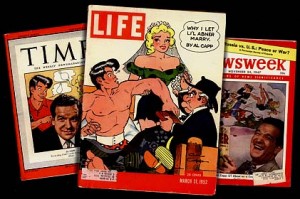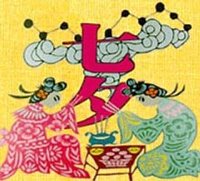
White Day is the complementary holiday of Valentine’s Day in Japan, South Korea and Taiwan. Valentine’s Day is celebrated as well, but a little differently than in the U.S.
On Valentine’s Day women generally give gifts of chocolate and the sort to the men in their lives: giri choco (obligatory chocolate) and honmei-choco (chocolate with a romantic connotation).
“Giri choco is given by women to their superiors at work as well as to other male co-workers. It is not unusual for a woman to buy 20 to 30 boxes of this type of chocolate for distribution around the office as well as to men that she has regular contact with.”
[Remind me to work in Japan.]
The counter-holiday, White Day, was promoted in the 1980s by the confections industry. One month after Valentine’s Day men relieve their guilt at receiving such gifts by buying the women in their lives chocolate in return. The March 14 chocolates generally cost 2 to 3 times as much as Valentine’s Day chocolates, and are boxed in white boxes, hence the name White Day.
I tend to avoid reporting on holidays promoted by the chocolate industry. Not out of any dislike of chocolate. On the contrary it’s my favorite food group. But there’s generally no rationale or history for the holiday other than to promote a particular confection. And depending on which calendar you look at, virtually every week in the year has a chocolate or candy holiday associated with it.
This week, for example, is American Chocolate Week.
March 19 is National Chocolate Caramel Day
March 24 is National Chocolate Covered Raisins Day
April hosts National Licorice Day, Chocolate-Covered Cashews Day and Jelly Bean Day.
And so on…
And National Chocolate Day? It’s on July 7.
And October 28.
And December 28.
And December 29.
You get the picture. There’s not any scrumptious chocolate candy combination you can name that doesn’t have its own holiday.
So why December 28 and 29? My guess, two more chances to indulge before those dreaded New Year’s resolutions kick in!
If you’re in Japan, enjoy a delicious, calorie-laden White Day! And if you’re in North America, I recommend celebrating two days at once with a delicious home-made Chocolate Pie.
After all, March 14 is also Pi Day!





